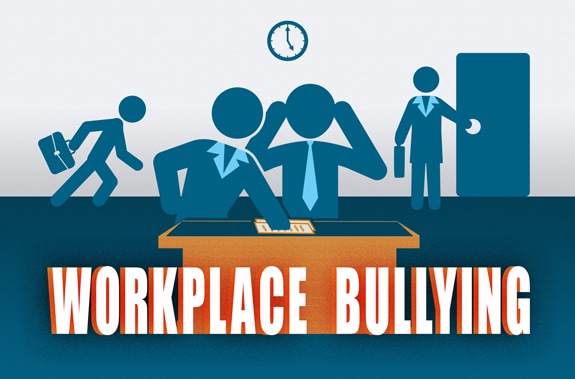|
Have you ever been the victim of bullying at your place of employment? Have you ever been the target of rumors, the silent treatment, sabotage, insults, social isolation, singling out of your work, unfair reprimands or other destructive and harmful behaviors at work? If so, you're not alone.
Research shows that workplace bullying is increasing across the world (some international studies cite up to 37% of workers reporting having been the victim of workplace bullying) and taking on a myriad of forms that can be difficult to recognize immediately. And, the effects of workplace bullying can be distressing, traumatic and even catastrophic for the targets of bullying behavior. Being the victim of workplace bullying is associated with increased psychological distress, increased absenteeism, decreased work performance, and long-term negative effects on one's career. Some researchers have concluded that workplace bullying is a greater threat to workers than physical violence. In short, it should be cause for serious concern in organizations of all sizes and types and in all industries. My colleagues (Dr. Mpho Pheko and Mr. Mondi Segopolo at the University of Botswana) and I recently published a paper on how organizational culture may perpetuate workplace bullying - When Work Hurts: A Conceptual Framework Explaining How Organizational Culture May Perpetuate Workplace Bullying - in the Journal of Human Behavior in the Social Environment. We propose a conceptual framework that hypothesizes a relationship between specific aspects of organizational culture and workplace bullying. Organizational culture "represents shared values, beliefs, traditions, and behavioral patterns" within the workplace. It represents the group norms of the organization and impacts everything from organizational practices to specific policies to unspoken expectations. Some of these cultural facets are more tangible and visible and others lie beneath the surface and are unconscious. The research we surveyed indicates that workplace bullying may proliferate in environments where "dishonesty, quick judgements and judgmental attitudes are common," in demanding work environments with little support, and in workplaces with a high performance orientation- as opposed to high humane and future orientations. For our own investigation, we used Dutch psychologist Geert Hofstede's and colleagues' six dimensions of culture: 1. Power distance 2. Uncertainty avoidance 3. Individualism vs. collectivism 4. Masculinity vs. femininity 5. Long-term vs. short-term orientation 6. Indulgence vs. restraint and a 7th dimension - Job-oriented vs. employee-oriented organizational culture. While we acknowledge that workplace bullying is a multi-faceted and complex phenomenon that is affected by wider economic, employment relationship, and cultural factors, our conceptual model proposes that different organizational culture dynamics may intentionally or unintentionally encourage, reward and perpetuate workplace bullying. Read our article in full to find out the definitions of the aforementioned cultural definitions, our specific propositions for how each of the cultural dimensions contributes to workplace bullying, and recommendations for how organizations can better understand the relationship between workplace culture and bullying. Read the article HERE:
0 Comments
|
Nicole M. Monteiro, Ph.D.Clinical Psychologist Archives
January 2018
Categories
All
|

 RSS Feed
RSS Feed